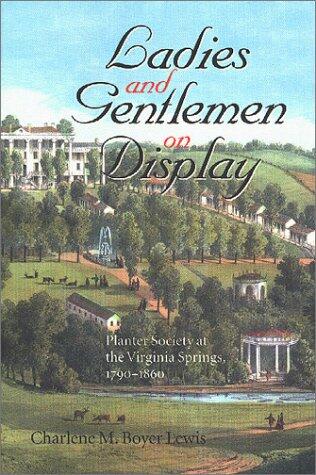
Ladies and Gentlemen on Display: Planter Society at the Virginia Springs, 1790–1860
아직 평점이 없습니다
History
Health & Wellness
형식
하드커버
페이지
293
언어
영어
출판됨
Dec 29, 2001
출판사
University of Virginia Press
ISBN-10
0813920795
ISBN-13
9780813920795
설명
During the years between 1790 and 1860, Virginia Springs transformed into a vibrant social hub where the planter elite from the southern states congregated to escape the heat of summer. Charlene M. Boyer Lewis delves into this fascinating world, providing an in-depth look at how these seasonal gatherings shaped social dynamics, class structures, and cultural practices in the American South. The social interactions at these springs were not merely for leisure; they held immense significance in the formation and reinforcement of societal norms.
In the context of a rapidly changing society, the author meticulously explores the roles and relationships of both men and women within this unique environment. Through detailed accounts and rich historical context, Lewis reveals how these gatherings served as a stage for the display of identity and status, highlighting the intricacies of southern honor and gender roles. The narrative showcases the expectations placed on attendees and how these interactions were influenced by both regional customs and the broader currents of American life.
With a keen eye for detail and a passion for history, Lewis captures the essence of the planter society at Virginia Springs, allowing readers to understand both the allure and the limitations of this social scene. The book invites reflection on how such gatherings not only reflected the cultural landscape of the antebellum South but also laid the groundwork for future social transformations.
In the context of a rapidly changing society, the author meticulously explores the roles and relationships of both men and women within this unique environment. Through detailed accounts and rich historical context, Lewis reveals how these gatherings served as a stage for the display of identity and status, highlighting the intricacies of southern honor and gender roles. The narrative showcases the expectations placed on attendees and how these interactions were influenced by both regional customs and the broader currents of American life.
With a keen eye for detail and a passion for history, Lewis captures the essence of the planter society at Virginia Springs, allowing readers to understand both the allure and the limitations of this social scene. The book invites reflection on how such gatherings not only reflected the cultural landscape of the antebellum South but also laid the groundwork for future social transformations.